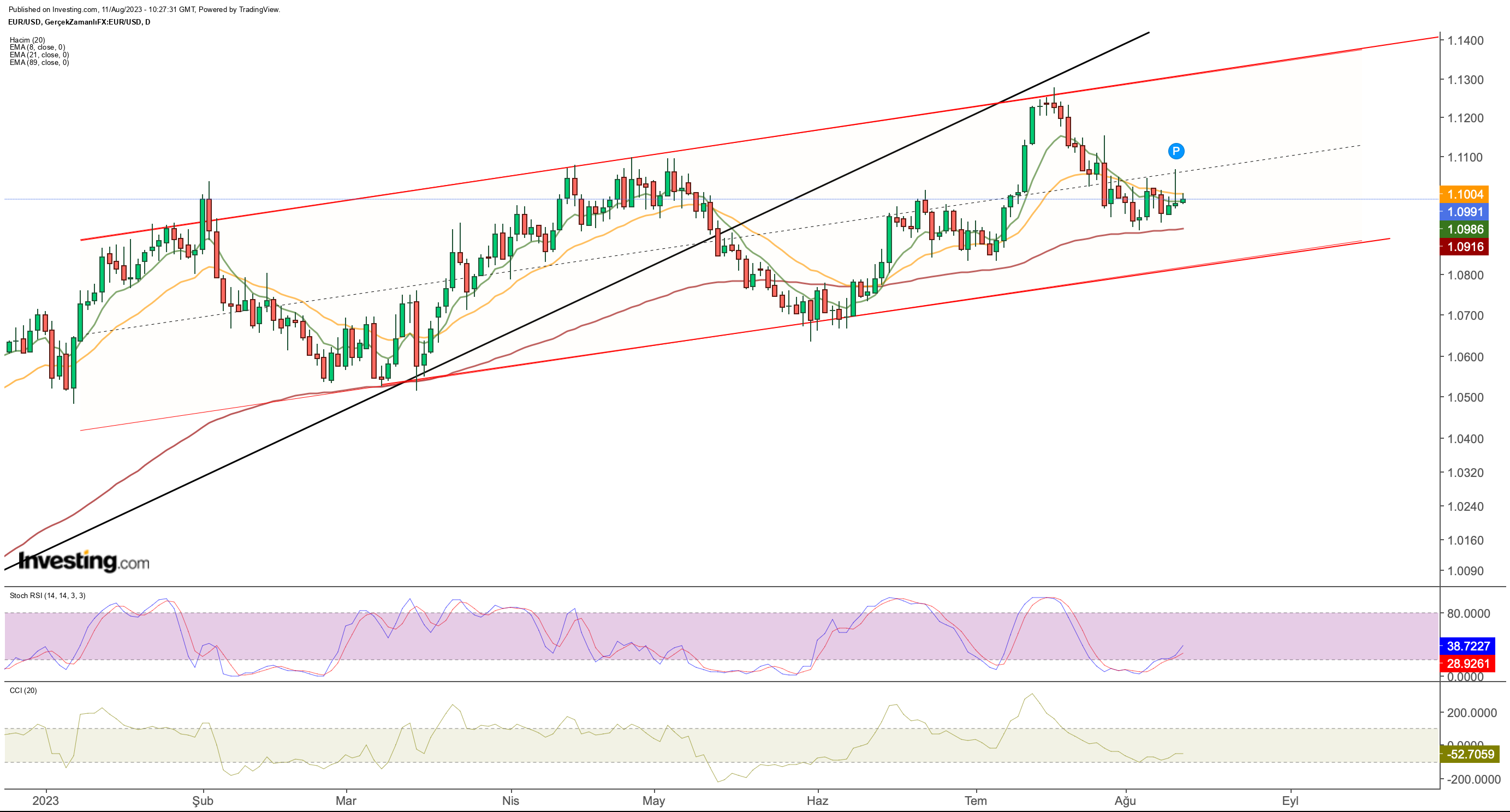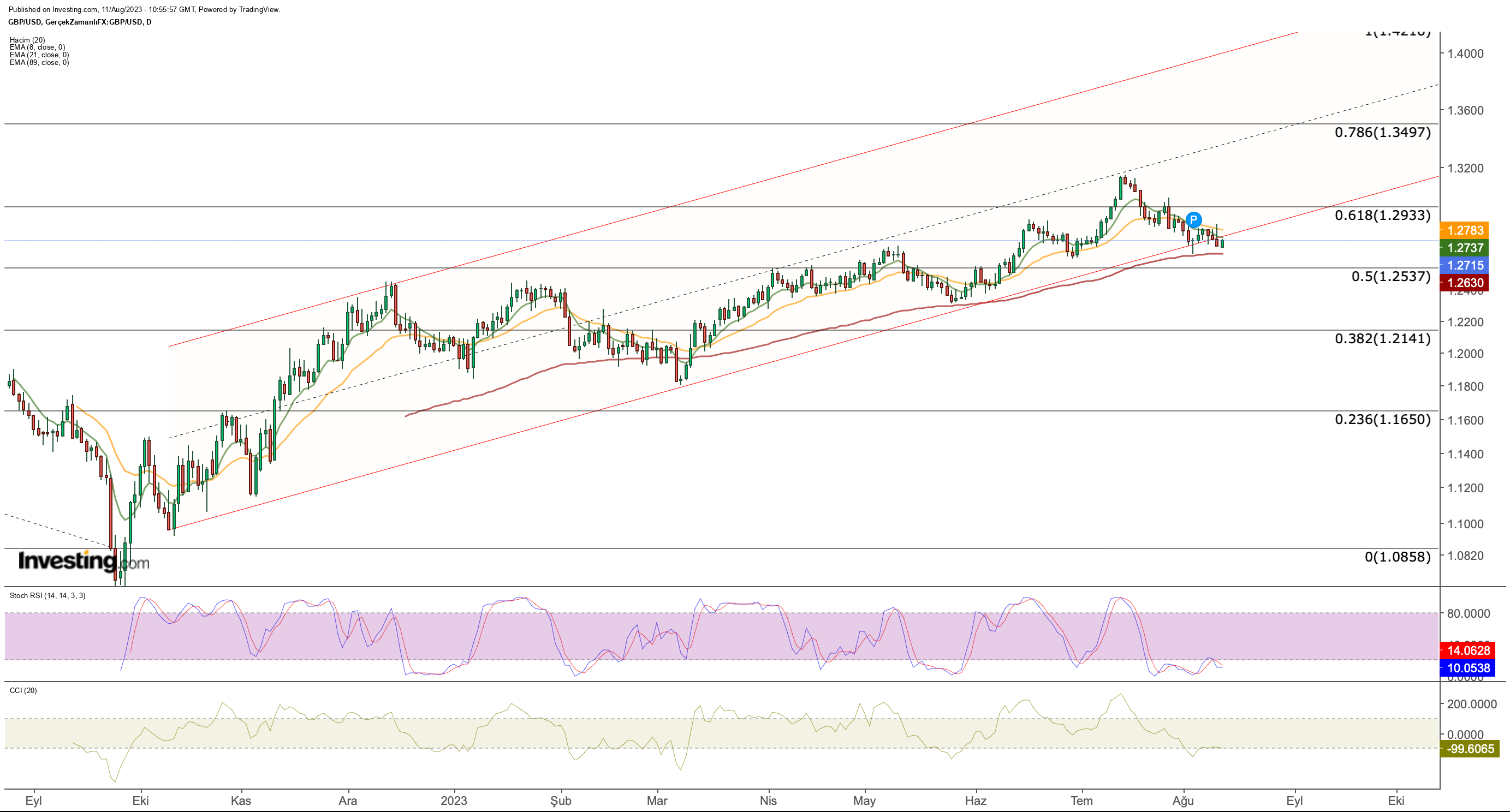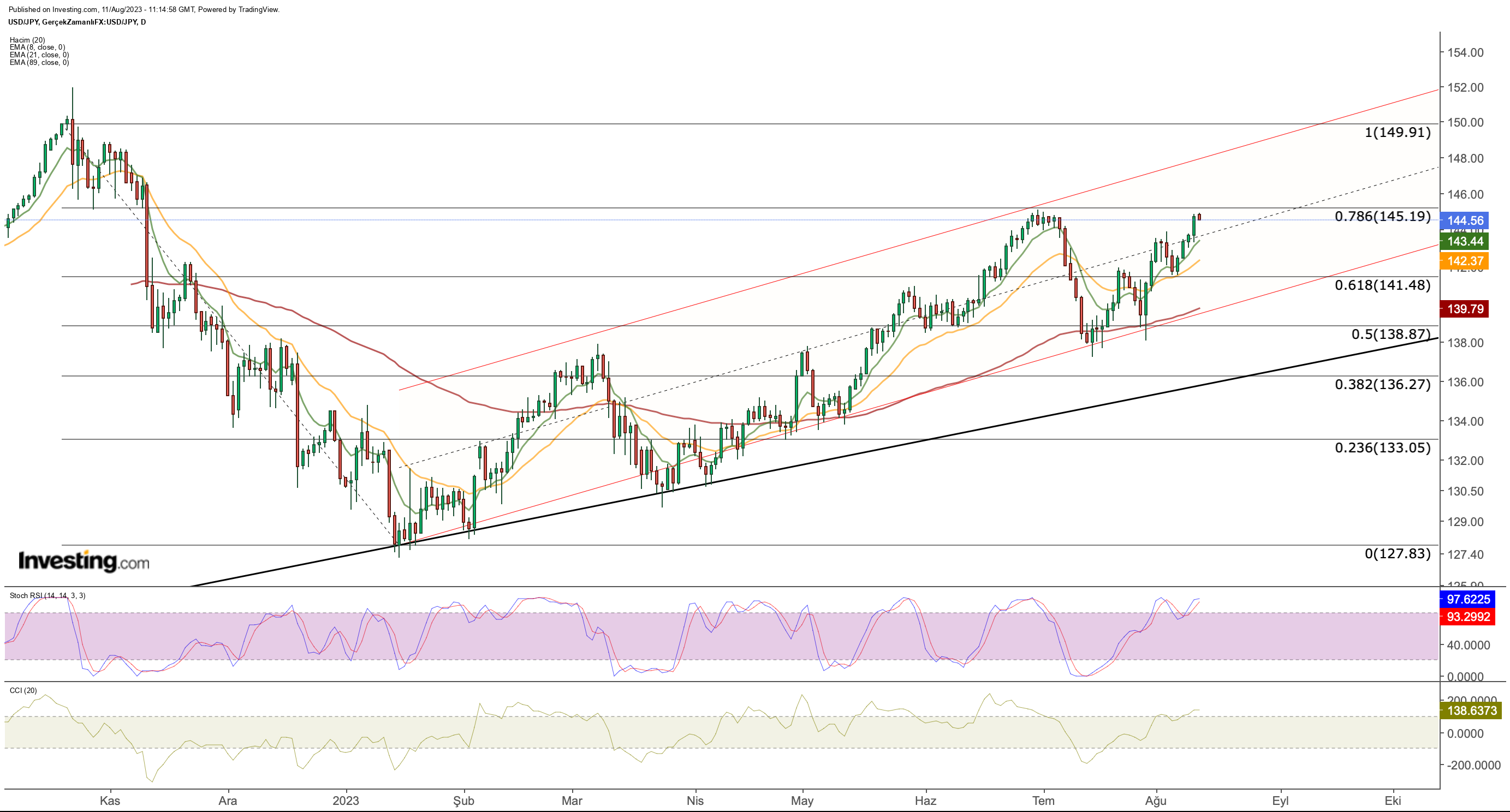- U.S. Dollar has had a volatile week
- Major currencies rose against the dollar before a swift turnaround
- The euro rebounded post CPI, while the pound and yen continue to rise
This week has been nothing short of a rollercoaster ride for the dollar index, as the release of US inflation data injected volatility into the markets. Major currencies experienced a brief uptick against the US-backed curreny, only to witness a swift reversal later.
Following the US CPI data, which pretty much aligned with expectations, EUR/USD's price action played out as anticipated, with traders buying the rumor and selling the news. The dollar index, which had dropped to as low as 101 when the data came out, swiftly bounced back and settled back around the 102 range.
Core inflation held its ground, marking a 4.7% year-on-year increase. The Fed remains far from its 2% target, underlining its inclination to maintain the current stance. Despite the Fed's current wait-and-watch approach and the likelihood of a mere 10% probability of rate hike in September, the outlook for one more rate hike this year remains on the table.
On a different note, there's an expectation that the Fed might only consider interest rate cuts towards the end of Q1 2024, reinforcing the notion that US interest rates will stay elevated for some time. This keeps the 'carry trade' effect going, favoring the US in a seemingly secure environment with high interest rates, ultimately bolstering the dollar.
Moreover, boasting a benchmark interest rate surpassing 5% and radiating confidence, the US emerges as an increasingly attractive option in contrast to countries with major currencies. This factor provides a boost to the dollar's strength when matched against the yen, while the euro and pound sterling showcase remarkable resilience amidst the eurozone and the UK's rate hikes.
Nevertheless, this very trend strengthens the dollar against Asian currencies in countries with lower interest rates. Given this intricate backdrop, let's now delve into the technical prospects for EUR/USD, GBP/USD, and USD/JPY.
EUR/USD
 The EUR/USD pair rebounded upwards yesterday after the inflation data release, attempting to reverse the downward movement that began in mid-July around the 1.13 level.
The EUR/USD pair rebounded upwards yesterday after the inflation data release, attempting to reverse the downward movement that began in mid-July around the 1.13 level.
However, the pair faced selling pressure as it approached a key central line within its upward channel, dampening the strength of the recovery. The pair's weakness was also influenced by comments from the Fed.
From a technical viewpoint, the euro is showing resilience by forming higher lows after hitting a low point in June. Looking ahead, if the pair manages to break the $1.1 level in the next few days, it could trigger a rise in the euro's value, potentially pushing the pair toward the $1.13 range.
This analysis is supported by the Stochastic RSI, a tool that helps us understand potential price movements. In the daily chart, the Stochastic RSI is moving away from the oversold zone, similar to what we saw in July when EUR/USD was at around $1.08. Back then, this led to a move upward to about $1.12.
On the flip side, if EUR/USD stays below 1.10, there's a chance it might continue to struggle and possibly move within a range, finding support around 1.09 and possibly bottoming around 1.08.
In summary, the EUR/USD pair's behavior around the 1.1 level is key in determining its short-term direction.
GBP/USD
 Over the past year, the British pound has been strengthening against the US dollar. However, the upward trend has yet to overcome a crucial barrier around the $1.3 mark, especially when considering the long-term perspective.
Over the past year, the British pound has been strengthening against the US dollar. However, the upward trend has yet to overcome a crucial barrier around the $1.3 mark, especially when considering the long-term perspective.
In July, GBP/USD encountered resistance at the 1.3 level, which aligns with the 0.618 Fibonacci retracement level based on the downward momentum observed between 2021 and 2022.
Following this resistance test, the pair has been undergoing a corrective phase within a defined range, prompted by selling pressure in this zone. This week, the pound slipped to the $1.26 range, approaching the lower boundary of its upward channel.
A pivotal juncture is at hand for GBP/USD. It's imperative for the pair to reclaim the 1.27 level to shake off the bearish sentiment and secure a rebound from the support zone.
Failing to do so could lead to a loss of support around the 1.26 region, potentially disrupting the favorable setup and triggering a retracement towards the $1.21 level in the short term.
Conversely, maintaining the $1.26 support through weekly closing could set the stage for GBP/USD's journey towards the subsequent resistance zone around $1.35.
This upward movement might gain momentum after surpassing the significant $1.3 resistance, driven by increased demand for the British pound.
In a nutshell, the fate of GBP/USD hangs on its ability to navigate through the 1.27 level and its subsequent interactions with the support and resistance zones, which will ultimately shape its trajectory in the coming months.
USD/JPY
 The USD/JPY pair has been in an upward trajectory for a major portion of this year, following a slight dip that occurred towards the end of last year.
The USD/JPY pair has been in an upward trajectory for a major portion of this year, following a slight dip that occurred towards the end of last year.
The dynamics of USD/JPY are substantially influenced by the differing strategies adopted by the US Federal Reserve and the Bank of Japan (BoJ) concerning interest rates.
While the US has been gradually raising rates, the BoJ has remained committed to maintaining low rates. This divergence has significantly contributed to the climb of the USD/JPY pair.
However, it's worth noting that there's a potential for Japan to step in with market interventions in an attempt to curb the rapid ascent of this exchange rate.
History provides us with an instance of such intervention. Back in September of the preceding year, when the dollar exceeded the threshold of 145, Japanese authorities engaged in purchasing yen, causing the USD/JPY rate to retreat and eventually stabilizing around 127 as the new year commenced.
At present, the dollar has yet again reached the pivotal 145 mark. This juncture presents the potential for Japan to intercede and manage the trajectory. From a technical perspective, the recent downward movement of the rate from the 145 level underscores the robust nature of this juncture as a formidable resistance point.
Should the rate successfully breach this resistance and establish itself above 145, it may pave the way for an advance toward the 150 yen range, which previously marked the pinnacle in October of the preceding year.
This prospective advancement could align with the broader upward trend. However, in the event that the rate fails to surmount the 145 mark, a temporary retracement back to the 140 yen level might ensue.
To sum up, the overarching outlook for USD/JPY remains optimistic due to the present policy landscape. Japan's intervention measures may slow down the the yen rally.
***
Disclaimer: The author does not own any of the instruments mentioned. This content, which is prepared for purely educational purposes, cannot be considered investment advice.

